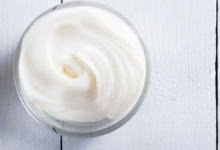The Impact of Social Media on Youth Mental Health: What You Should Know

You know how it goes: you’re lying there, phone in hand, telling yourself it’s just a couple scrolls before lights out. Next thing you know, it’s 2 AM and you’re ten layers deep in TikToks, Insta stories, and some random person’s vacation photos from 2019. Sleep? Never heard of her.
And if you’ve got kids, teach kids, or just give a damn about kids – let’s be real, you’ve definitely had that “What is this doing to their brains?” panic attack. Social media isn’t just some background noise anymore. For teens (and, wild enough, even tweens), it’s their group chat, their therapist, their hype squad, their stage…and, yeah, sometimes a straight-up minefield.
So, let’s get into it. Not in a “sky is falling” way, but with actual empathy, some solid facts, and maybe a few stories that’ll hit a bit too close to home. Strap in – this ride’s got a few twists.
The Double-Edged Sword of Connection
Alright, let’s not paint social media as the Big Bad Wolf. Sometimes, it’s actually a lifeline. Picture Mia – 16, stuck in some tiny town where “LGBTQ+ resource” probably means a rainbow bumper sticker at the grocery store. Online? Whole different world. She lands on TikTok, maybe jumps into a Discord server, suddenly she’s got people who get her, who make her feel like she actually matters. That’s magic, I don’t care what anyone says.
And Jamal – 14, obsessed with making beats. He’s glued to YouTube tutorials, sees how folks are using AI to mash up vocals, tries it himself, and starts dropping his own remixes. The comments? People are hyped. It’s like rocket fuel for his confidence. That kind of buzz? You can’t just find that in gym class.
So, yeah, social media gets a bad rap, but honestly, it’s just a tool. Not good, not evil. It’s what you do with it. The twist? Even the best stuff can mess you up if you don’t pay attention. It’s like – power tools are great, until you forget they’re sharp.
The Pressure to Be Perfect
Alright, let’s get real for a sec. Filters aren’t just about slapping a dog nose on your face or smoothing out your skin until you look like a porcelain doll. There’s this other kind – the kind that messes with your head. You know, that endless stream of gym flexes, glowy selfies, or whatever “soft girl” vibe is trending this week. Teens scroll through all that, and somewhere along the way, this nasty little voice kicks in: “Wow, literally everyone’s crushing it but me.”
Not just me saying this – there’s actual data. The American Psychological Association did a study (yeah, they’re legit), and surprise, surprise: teens glued to their feeds, especially girls, were way more anxious, felt crappier about themselves, and hated their bodies more. I mean, duh? If you’re drowning in everyone’s highlight reels, it’s almost impossible not to play the comparison game.
Now, adults – they might look at that stuff and just go, “Ehh, whatever,” and keep scrolling. But teens? Whole different ball game. Their identities are still under construction, you know? Everything feels like it matters a hundred times more, and that social comparison trap online? It’s brutal. It doesn’t let up.
The Dopamine Loop and the Endless Scroll
Here’s what’s wild: social media platforms are literally designed to keep you hooked.
Every “like,” comment, and notification delivers a little ping of dopamine. It’s the same brain chemical released when you eat chocolate or win a prize. For a developing brain, that kind of feedback loop can be addictive.
Add in algorithms that feed content based on engagement – and suddenly, your teen isn’t just scrolling…they’re spiraling. From fitness videos to calorie-counting apps. From sad song compilations to romanticized depictions of mental illness.
Not all of it is bad. But the line between “relatable” and “reinforcing” is thin. And hard to spot when you’re 15 and trying to make sense of your own feelings.
Real Talk: The Mental Health Stats
Let’s pause for some sobering numbers:
- A 2022 report from Common Sense Media found that 1 in 3 teens say social media has a mostly negative effect on people their age.
- Rates of depression and anxiety among adolescents have risen sharply in the last decade – mirroring the rise of smartphone use.
- The Surgeon General’s Advisory in 2023 labeled youth mental health a national crisis, citing social media as a contributing factor.
That’s not to say Instagram or Snapchat cause depression. But they can amplify existing struggles – and often replace healthier forms of connection, expression, and coping.
The Lost Art of Boredom (and Why It Matters)
One often-overlooked consequence of constant connectivity? Kids rarely get bored anymore.
And that’s a problem.
Boredom is fertile ground for creativity, reflection, and resilience. But with a world of distraction in your pocket, there’s little room for stillness. When something difficult happens – like a breakup, a bad grade, or a fight with a friend – many teens don’t sit with those feelings. They scroll them away.
Instead of journaling or making music or talking to someone, they get trapped in a cycle of avoidance. And over time, that avoidance can lead to deeper emotional disconnection.
This is why creative outlets still matter. Just ask Jamal – remember him? After joining an online forum for young producers, he learned how to use music AI software not just as a tool for beats, but as a way to express emotions he couldn’t always name. His digital time became more than consumption – it became creation.
So, What Can We Actually Do?
This isn’t a call to ban social media. That’s not realistic – and honestly, it can backfire. What works better is fostering awareness and balance.
Here are a few approaches that make a difference (no checklist – just conversation):
- Talk, don’t preach. Ask your kids what they see online. What makes them feel good? What makes them feel “off”? You’d be surprised what they’re willing to share – if they’re not afraid of being judged.
- Encourage digital breaks. Not as punishment, but as reset. Maybe it’s a walk, a game night, or 20 minutes with no phones at dinner. Frame it as “making space” instead of taking away.
- Model better behavior. Teens notice everything. If you’re constantly scrolling at red lights or during meals, your “limit your screen time” advice won’t land. Lead by example.
- Celebrate creation over consumption. Whether it’s writing, photography, or making playlists, push them toward using tech to build – not just browse.
It’s Complicated, But Not Hopeless
Alright, here’s the thing: social media isn’t some evil monster lurking in your phone, nor is it a magic wand that only brings sunshine and rainbows. It’s just… a thing. Like a hammer, or, I dunno, a blender. Depends what you do with it, right?
Now, teens and young folks? Man, they’re in the thick of it – trying to figure out who the heck they are, what they care about, and whether that selfie actually looks okay or not (spoiler: it does). Sometimes scrolling brings them a crew, inspiration, maybe even a little spark. Other times? It’s just a big ol’ mess of self-doubt, FOMO, and “why is everyone else’s life cooler than mine?”
Here’s where we come in. No need to freak out or go full “back in my day” mode. We just gotta show up. Be interested. Don’t judge. Just listen, nudge, and help them steer the ship when the waters get choppy.
Because, honestly, every endless scroll could be the start of something wild or wonderful or weirdly meaningful. Let’s make sure they end up with stories that are actually worth telling – not just endless highlight reels.





